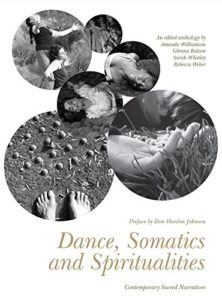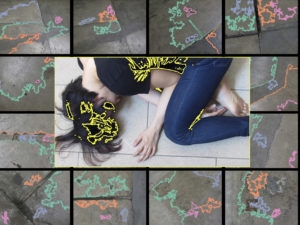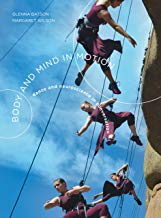Check out our podcast

ResDance, hosted by Dr. Gemma Harman
The podcast is the basis for our chapter ‘entering the f/old – languaging as the ‘stuff’ of art making’
to be published in: Practitioner Perspectives on Dance Research, Dr. Gemma Harmon, Ed, Routledge, 2024.
Now in our 11th year of collaboration, Susan Sentler and Glenna Batson
we await the publication of our work in 2024.
artmaking as embodied enquiry: entering the f/old
Susan Sentler & Glenna Batson
image, Susan Sentler, Jamie Forth. dancer, Valerie Lim
The book is not ‘about’ folding, as such…but rather, the contributors expand on an evolving artistic practice of the macro- and micro dimensions of folding body, paper, fabric, photography, sound. A new website also is in the works
We invited eight notable contributor/collaborators – part of our body-storming beehive during this decade-long project:
Meghna Bhardwaj, dance artist/faculty, Performing Arts, Shiv Nadar University, Delhi
Jude Casseday, independent soundscape artist, Durham NC USA
Sony Devabhaktuni, faculty, Architecture, University of Hong Kong
Jamie Forth, digital artist/faculty, Computing, Goldsmiths College, University of London
Daniela Monasterios Tan, faculty, Fashion, LASALLE College of the Arts, Singapore
Jennifer Lucey-Brzoza, independent designer, Boston MA USA
Mattie Wang & Sophie DeSeriere, multimedia artists, The Netherlands
From our back cover…
What can a fold be? Virtually anything and everything. For centuries, folds/folding has captured the world’s imagination. Folds readily appear in revivals of the ancient craft of origami, the simplest acts of pedestrian life, in art, design, architecture, performing arts, linguistics, the philosophical turnings of the mind, and not the least, the many ingenious computations of (bio)engineering and technology. What awaits our understanding is how deeply the fold roots into embodiment, into our very impulse to create. This book is about folding as a vibrant stimulus for trans-disciplinary artistic research – whether for the performative, for product realization or simply to enliven body, mind and spirit. Conceived as art-made-differently, Susan and Glenna share the abundance of their decade-long collaboration in developing their approach to practice research in the f/ol\d. In addition to their own insights, they invite seven of their collaborators to contribute, each a veteran artist. Because the f/ol\d is destined for artmaking – for making anything – the authors reach outside of the constraints of their disciplines into new worlds. The f/ol\d will appeal to any number of niche areas because the practice etches into the very fabric of embodiment, enriching art making with all its underlying tensions and ambiguities. Come, enter the f/ol\d. Join along with this group of veteran collaborators as they engage creatively with the unknown.
Select articles co-authored by Susan Sentler & Glenna Batson
pdfs by request – glenna@glennabatson.net
Batson G, Sentler S (2017). How visual and kinesthetic imagery shape movement improvisation. Journal of Dance & Somatic Practices, 9:2.
Batson G (2017). Human Origami: The embryo as a folding life continuum. International Journal of Prenatal and Life Sciences. 1:1.
Sentler S. (2019). The liquid architecture of bodily folding. In Lushetich, N (Ed), Symbolism: Beyond Mind. Berlin: DeGuyter publishers.
Sentler S, Batson G. Human Origami: uncovering meta-levels of corporeal embodiment through movement improvisation. In: Burridge, S (Ed), Embodied Performativity in Southeast Asia: Multidisciplinary Corporeality. Routledge, 2021.
Sample Glenna’s Writings
Over the last decade, I’ve published two books and (earlier) a number of articles – peer-reviewed research and popular press.
Read about my books on my Amazon author page.
Body and Mind in Motion: Dance and Neuroscience in Conversation, with contribution by Dr. Margaret Wilson. University of Chicago Press 2014.

Dance, Somatics and Spiritualities: Contemporary Sacred Narratives, editor and contributor, with Amanda Williamson, Sarah Whatley and Rebecca Weber. University of Chicago Press 2014.
Articles- both personal interest & scholarly
Dance and Parkinson’s Research
Verbal Auditory Cueing of Improvisational Dance: A Proposed Method for Training Agency in Parkinson’s Disease, G Batson, CE Hugenschmidt, CT Soriano Frontiers in Neurology 2016. open access
This article was shortlisted for aFrontiers Special Topics award in 2017. The trailer video of the research received honorable mention at the Parkinson’s World Congress2013, Glenna Batson, Coming Together – Dance Improvisation and Parkinson’s Disease (Thanks to Nick Hristov and the team at the Center for Design Innovation, Winston-Salem, NC).
Dance Science
Batson G. Exercise-induced central fatigue – A frontier for dance science research. Special Issue on Overuse in Dance Training (invited paper), Journal of Dance Medicine and Science, 2013; 17 (3): 92-100.
Central Fatigue JDMS V17N2 2013Batson
Human Origami
Batson G. Human Origami: The Embryo as a Folding Life Continuum. International Journal of Prenatal and Life Sciences 2017Human Origami_IJPLS copy
Critical Somatics
Kampe T, Batson G. Dancing Critical Somatics – An Emancipatory Education for the Future? Chapter in Dance Fields: Staking a Claim for Dance in the 21st Century. London: Dance Books (2020).
Dance & Somatics
Batson G: The Somatic practice of intentional rest in dance education – Preliminary steps towards a method of study. Journal of Dance and Somatic Practices, 2010 Intentional Rest_Batson
Batson G. The Alexander Technique and the science of self-regulation. In: Health Integrated Training and Education (HITE), Alexander Technique in Context, London: UK 2014HITE Chapter_Glenna Batson
Batson_AT publication summary_1993-2021
Summary of all my publications on the Alexander technique since the early 1990’s
Available on request!

